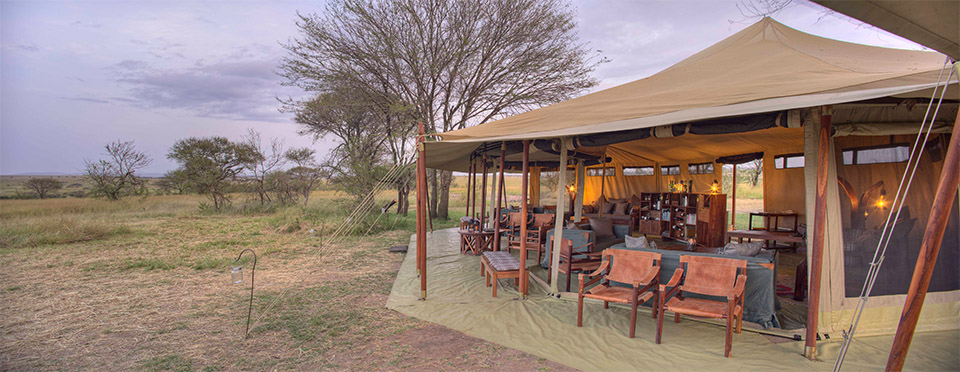Our Mobile Migration Camps : How Does It All Happen?
By Akil Halai – Tanzania Field Ops Coordinator
The massive moment we are all anxious for that happens once or twice every year is when we begin moving our mobile camps. Asilia has three truly mobile camps in the Serengeti which move to two or three locations in a year. These are our Olakira Camp; Kimondo Camp; and Ubuntu Camp, all located in the Serengeti. These locations are very carefully and meticulously chosen before we actually place a camp. This article is written to give our guests and our readers a brief idea of what is involved in moving a mobile camp.
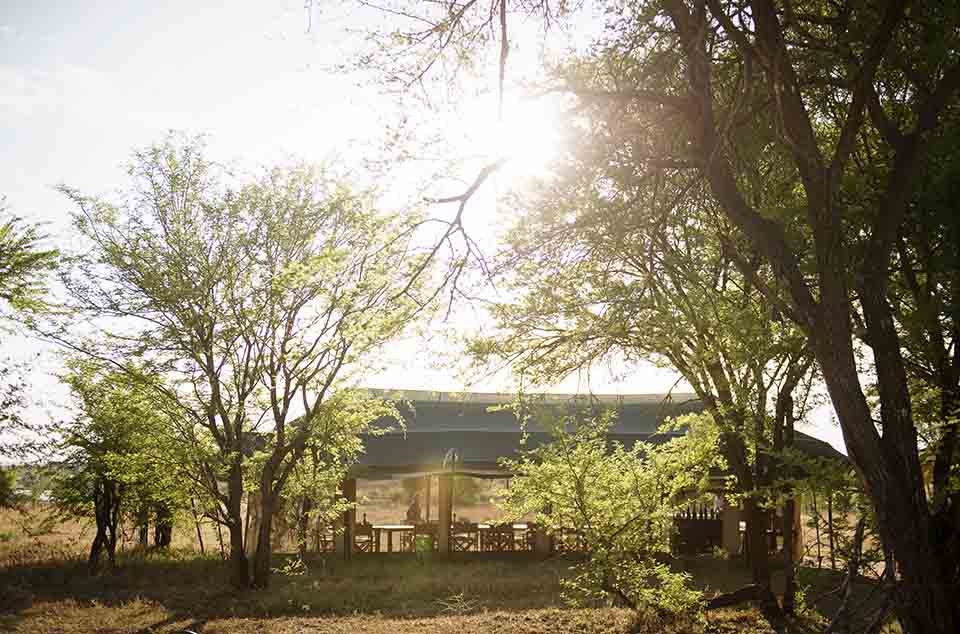
At Asilia, we have drawn inspiration from the pioneering safari days to recreate an experience that gets you right into the very heart of the incredible biodiversity that exists there in the Serengeti. One of the best wildlife experiences can be achieved when visiting our mobile camps in the Serengeti. These camps are located in the best preserved areas with magnanimous views with close proximity and access to high density game viewing.
The experience is enhanced by the rustic design of these simple but very luxurious and beautiful camps. Each location offers splendid African sunsets and best venues to enjoy a meal in the middle of nowhere. The basic secret ingredient of the specific locations where we reside our mobile camps is the “Great Wildebeest Migration”. In any period of the year, you will have access to witness and experience the migration when staying at one or more of our mobile camps. Set against the backdrop of the great wildebeest migration, our self-sufficient and environmentally-friendly camps travel to the best areas in the Serengeti depending on the time of year and the stage and whereabouts of the migration, giving you a front row set to one of Mother Nature’s greatest events.
Olakira Camp moves twice a year. It is located in the Kogatende area of the northern Serengeti where many times our guests have beheld the Mara River crossing from the luxury of their tents or our lounge. This camp stays in this prime location from June to November. The wildebeests cross the Mara River “technically” twice. Once when the cross to go to Maasai Mara to look for greener pastures and again when they are back in the Serengeti to move south. We then move Olakira to the Ndutu area to the short grass plains in the Ngorongoro conservation area where these wildebeests prepare to give birth and nurse their young before the head off to the western corridor of the Serengeti to start the whole process.
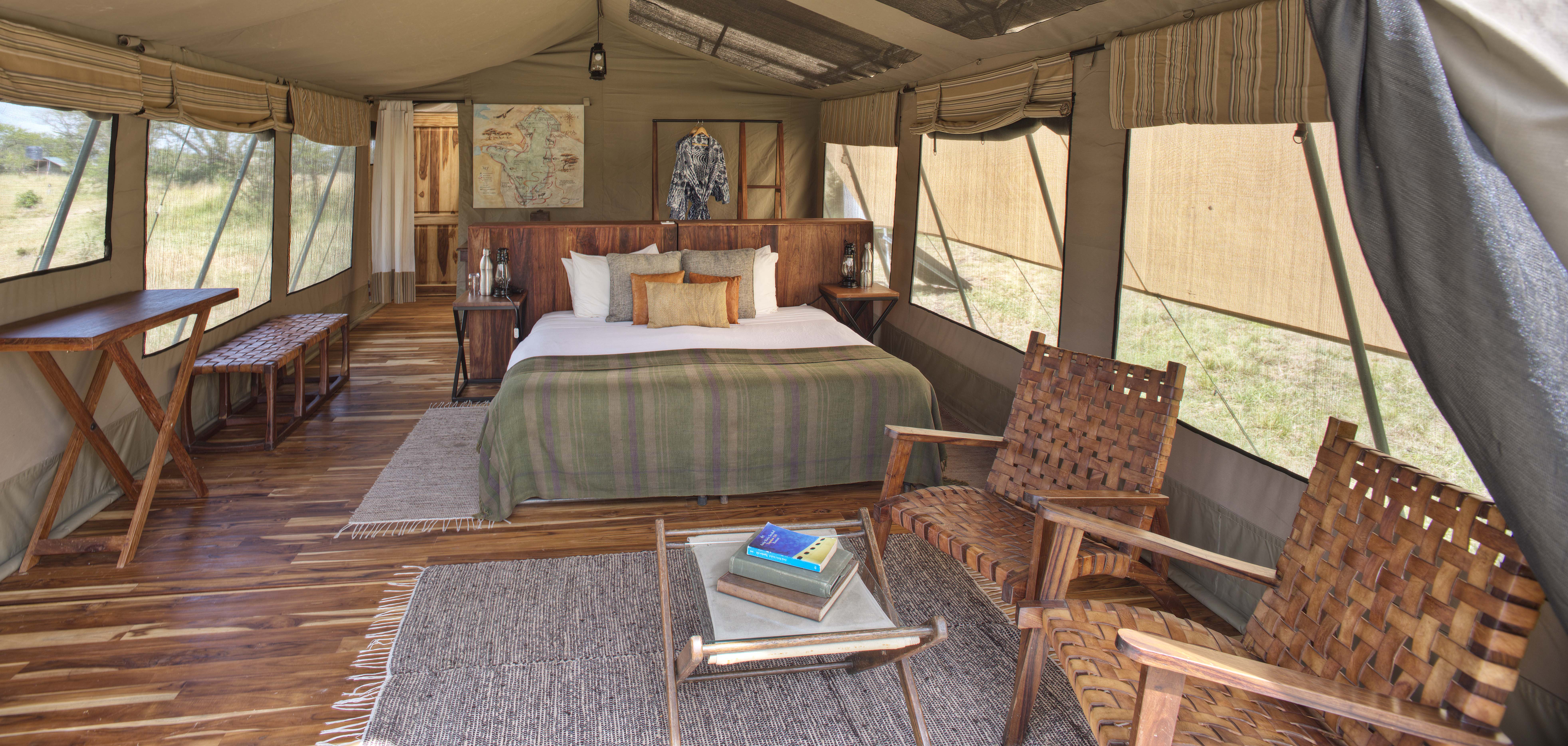
Your bedroom at Olakira Camp.
In May, when the herd arrives at the Western corridor and the Grumeti area, we have our Ubuntu Camp positioned here. Ubuntu Camp stays until mid-August, after which it joins the other mobile camps in the North. The camp then stays in the North until November and then quickly moves to the Southern Serengeti Kusini area to catch the herd coming back to breed.
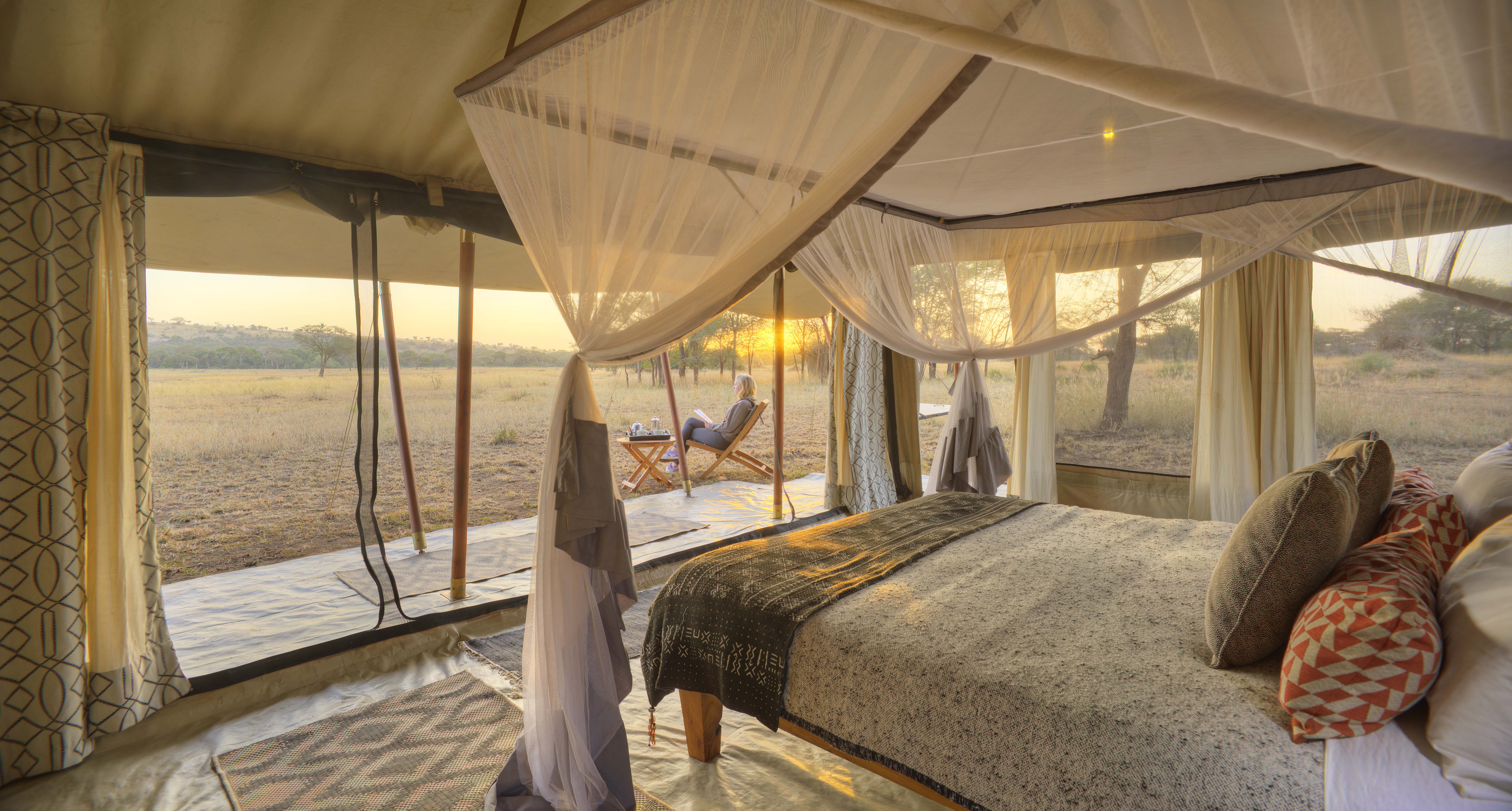
Your bedroom at Ubuntu Camp.
Kimondo Camp starts its marathon in the Lamai area north of the Mara. This is special because it is one of the few areas that the herds are witnessed crossing the river facing you. With the location of this camp and the amphitheatre’s edge, it is placed on, every guest that visits this camp surely falls in love with it. Kimondo stays here until November after which it joins Ubuntu Camp in the Kusini area. Once again, it is placed at an amphitheatre’s edge in one of the best game viewing areas in the South with wildebeests’ joining the orchestra every night while we dance under the stars.
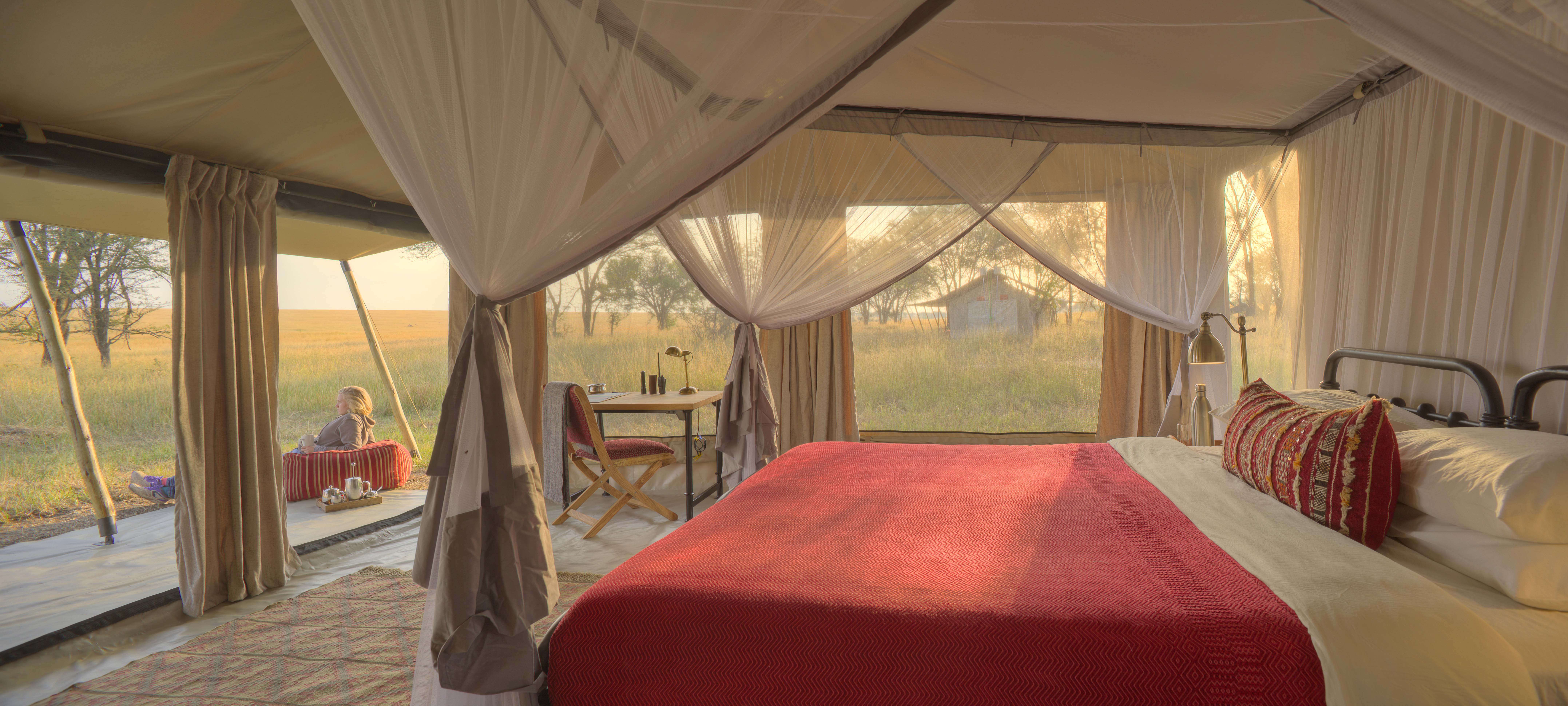
Your bedroom at Kimondo Camp.
As much as this sounds like a beautiful story, the actual act of moving camps is not an easy feat. It requires a lot of planning & preparation. Our camps have running showers which are an added bonus from bucket showers, mobile but comfortable furniture, solar power, pipes and plumbing as well as the basic luxuries such as internet connections, computers, fridges, ovens, ice machines, generators, water pumps etc.
All these assets, including tents, tractors, jeeps, stock, cutlery, crockery, linen, and soft furnishings have to be properly packed and loaded on trucks. We usually load seven to eight trucks before we move. Now, the adventure begins. Most moves come with nightmares such as bad weather and roads. We have to cover long distances with the convoy of trucks which have to overnight somewhere in the wilderness. We have to make sure we have food, water, firewood and sleeping gear handy to be able to accommodate the staff. It is sometimes at a spot with great tree covers and excellent views, and other times on the side of the road where your trucks break down or get stuck due to rain assisted by the black cotton soil!
Once we get to the site, the first thing we do is make a firebreak in case there are bushfires. We than pitch staff tents and the staff kitchen. Once we collect water, we are ready to pitch all the other tents, clean, varnish and place furniture, get the pipes, electric cables and plumbing in place. Before we receive our first guests we do fire & medical emergency drills and do a comprehensive walk around to make sure all our risks are mitigated. This usually takes five to six days. Having said that, we move a camp in an astonishing period of eight days. This is a great achievement and we do acknowledge that our staff are great magicians. We sometimes also have to work in rain and harsh weather conditions so that we do not fall out of time.
In a weeks’ time, we are ready to welcome our guests. Our millions of guests who own the plains (the wildebeest) as well as those who come to visit them!
More The Great Migration Articles

BBC One: Serengeti – Transporting You To East Africa
06 July 2019By Britta Foulis – Content Marketing Manager If you’ve had a chance to...

East Africa’s Ultimate Bucket List Adventures
23 May 2019By Anwynn Louw – Digital Marketing Assistant East Africa is home to som...

Tanzania – One of the best countries in Africa to visit
28 October 2022An African safari is a definite must do, but very often guests ask, which is...

The Science Behind Africa’s Great Migration
14 June 2018Every year, millions of hooves drum against Africa’s plains, raising dust and...
